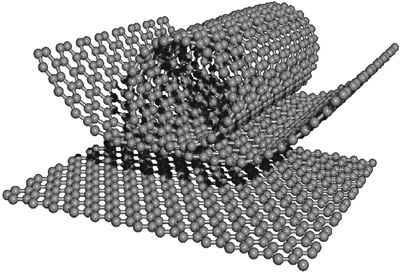Nano Superconductors and Electricity Storing Properties in CNT Nanotubes (Based on Nano-Micro PhD)
Researcher and author: PhD student Afshin Rashid
Note: Because carbon nanotubes are hollow, it is possible to put foreign materials inside them. So by putting the metals inside it you can improve both the electrical properties and the energy storage.
Nano-filament capacitors have both current and energy transfer capacitors. Copper wire and plastic nanoscale layers were used to make the string. Cables and wires have been used to store electricity until now. But a string of lightweight copper nano-wires can save energy in addition to transferring electricity. A nanostructure is used for guidance and storage. Such a wire can be used inside CNT single-layer nanotubes to store current. Copper nano-wires are a nanoscale sheath. And the sheath is combined with a special alloy to form an electrode.
Superconductors also need another electrode for storage. To do this, a thin layer of plastic is placed on the surface of the sheath and covered with another metal . A special gel is also used to bond these layers together. Due to the insulation of the nano-layer, in the supercapacitors the inner wire strand can play the role of current transducer and the external electrode provides storage independently . In this case, a superconductor is made of copper, which is capable of passing both current and storage. Thomas believes other superconductors can also be produced. Energy storage and electrical wiring of nanotube cables can be as conductive as metal wires, among compounds Different from those used in supercapacitors, graphene based materials, especially 3D graphene , due to their unique three-dimensional structure facilitate the electrolyte penetration and increase energy storage. Also, high electrical conductivity and high surface area are other advantages of this type of 3D porous structures that have the potential to be used in nano-supercapacitors.
One of the ways to optimize the properties of energy storage systems is to develop new materials for use as electrode material in nano-capacitors. Carbon materials such as graphene, carbon nanotubes, graphite, carbon nano-fibers, etc ... play an important role in nano-supercapacitors because of good electrical conductivity, cheapness and availability, good biocompatibility and good chemical stability. The carbon structures are three-dimensional graphene, which due to its unique three-dimensional structure facilitates the electrolyte penetration and has a high surface area and high electrical conductivity.
Conclusion:
Nano-supercapacitors are also very similar in structure and mechanism to capacitors (at the nanoscale), except that the surface area of the electrodes is higher due to the large porosity in the supercapacitor , which results in increased energy storage capacity in the supercapacitor . The capacitors are larger than conventional capacitors. The energy density of nano-supercapacitors is much higher than conventional dielectric capacitors .
Author: Engineer Afshin Rashid
PhD student of Nano-Microelectronics at Islamic Azad University, Science and Research Branch, Tehran





